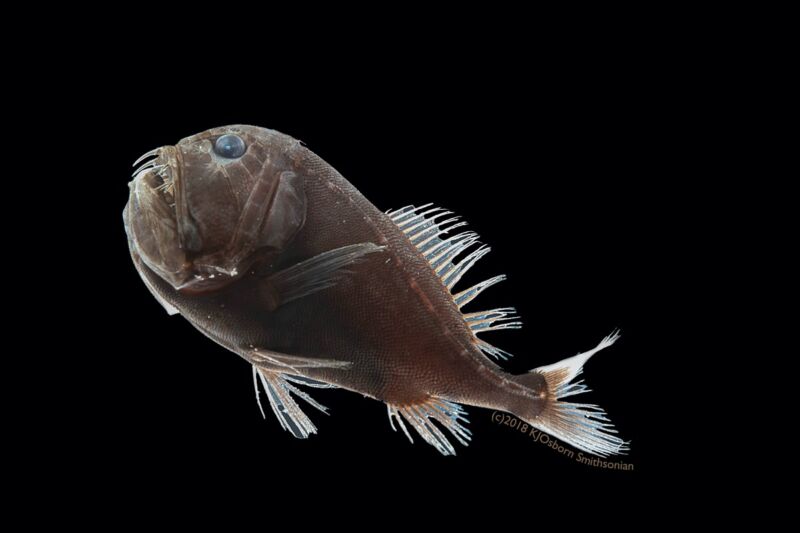
Enlarge / One specimen of the ultra-black fish species Anoplogaster cornuta. A unique arrangement of pigment-packed granules enables some fish to absorb nearly all of the light that hits their skin, so that as little as 0.05 percent of that light is reflected back. (credit: Karen Osborn/Smithsonian)
In the darkest depths of the ocean, where little to no light from the surface penetrates, an unusual array of creatures thrives, many of which create their own light via bioluminescence to hunt for prey, among other uses. But there are also several species of fish that have evolved the opposite survival strategy: they are ultra-black, absorbing nearly all light that strikes their skin, according to a new paper in Current Biology.
Karen Osborn of the Smithsonian's Museum of Natural History became intrigued by the creatures upon finding she was unable to capture these ultrablack fish on camera while working in the field, trying to photograph specimens caught in the team's deep-sea trawl nets. "Two specimens, the Anoplogaster cornuta and the Idiacanthus antrostomus, were the only two fish over the course of six years of field work that I was able to get decent photographs of," Osborn told Ars.
To do so, she used a Canon Mark II DSL R body and 65 mm macro lens with four strobes, then tested various lighting setups by taking lots and lots of photographs. Finally, she adjusted contrast and applied a high pass filter uniformly across the images, the better to bring out the details. It still wasn't sufficient to capture most of the specimens caught in the trawl net. "Over the years I deleted thousands of failed shots of other fish as useless because I couldn’t bring out the details in the photos," she added. "It didn't matter how you set up the camera or lighting—they just sucked up all the light. I wish I had a few of them now to illustrate this."
No comments:
Post a Comment